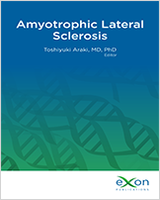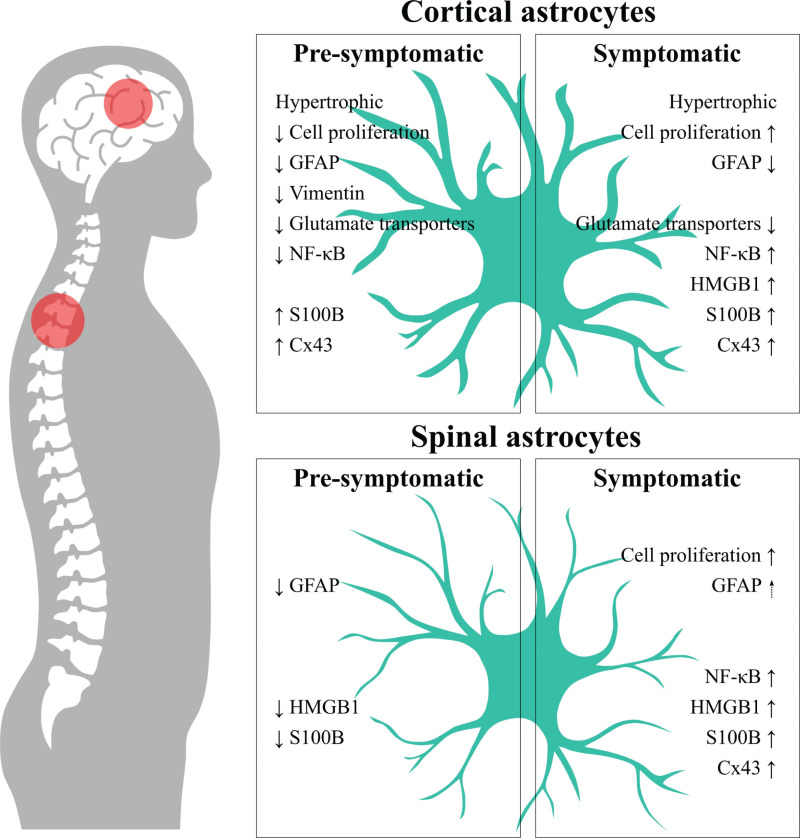Astrocyte regional diversity and heterogeneity in ALS. Astrocytes in ALS are known to have an aberrant and reactive profile, expressing different astrocytic markers depending on their location in the central nervous system (cortical or spinal astrocytes), and stage of the disease (pre-symptomatic and symptomatic). Cortical astrocytes are less proliferative in the pre-symptomatic stage, where they show a decreased expression of GFAP, vimentin, glutamate transporters and NF-κB, and an increased expression of S100B and Cx43 (12, 15). In the symptomatic stage of the disease, cortical astrocytes are more proliferative, showing an increased expression of NF-κB, HMGB1, S100B and Cx43, together with a reduction of glutamate transporters and GFAP (12, 15). Spinal astrocytes in the pre-symptomatic stage exhibit a decreased expression of GFAP, S100B and HMGB1, while in the symptomatic stage astrocytes present a proliferative profile with increased expression of NF-κB, S100B, HMGB1 and Cx43. The expression of GFAP in the symptomatic spinal astrocyte has been shown to increase or decrease, depending on the model, condition or region used in the study (16, 17, 23, 24). Altogether, these data demonstrate the high diversity and heterogeneity of astrocytes in ALS. ALS, amyotrophic lateral sclerosis; Cx43, connexin-43, GFAP, glial fibrillary acidic protein; HMGB1, high mobility group box protein 1; miRNA-146a, microRNA-146a; NF-κB, nuclear factor kappa; S100B, S100 calcium-binding protein B.

